Staff
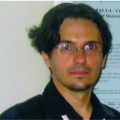
Bojan Marinkovic |
Bojan Marinkovic is an engineer of crystallography and mineralogy. He received his first degree in 1995 and his MSc degree in materials science in 1997, both from the University of Belgrade, Serbia. He worked at the Pontifical Catholic University of Rio de Janeiro as a research associate sisce 2010. In 2010, he joined the Department of Materials Engineering at Pontifical Catholic University of Rio de Janeiro as an assistant professor. His principal research area is ceramic materials with a focus on synthesis, processing, characterization, and applications of TiO2-based nanostructures, negative thermal expansion ceramics and nanocomposites with polymer matrices. He has a special interest in X-ray diffraction and electron microscopy techniques as materials characterization tools. He is a project leader of several research projects funding by industry and Brazilian government agencies and maintains international research collaboration with Dalhousie University, Canada, University of Belgrade, Serbia and Escuela Politécnica Nacional, Equador.
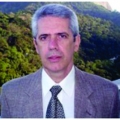
Fernando Rizzo |
Fernando Rizzo holds a Ph.D. in Materials Science from the University of Florida and was a Fulbright Visiting Scholar at the University of California, Los Angeles. He is Professor at PUC-Rio, Researcher 1A of CNPq, and Scientist of Our State of FAPERJ. His areas of expertise are Physical Metallurgy and Phase Transformations. Other positions include Visiting Professor at the University of Leeds (England), Director of the Departmentof Materials Engineering at PUC-Rio and Dean of theTechnical and Scientific Centre of the same Institution. He was Deputy Scientific Director of FAPERJ and President of the Association of Mining, Metallurgy and Materials(ABM). He received the Commend of the National Order of Scientific Merit, is Member of the Brazilian Academy of Sciences, the National Academy of Engineering, the Pan American Academy of Engineering and Fellow of ASM International. He is currently Director of the Center for Strategic Studies and Management(CGEE).
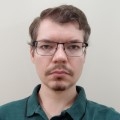
Guilherme Monteiro Torelly |
Since 2023, Professor at the Pontifical Catholic University of Rio de Janeiro (PUC-Rio), working at the Semiconductor Laboratory (LabSem) of the Department of Electrical Engineering (DEE).
PhD in Electrical Engineering with emphasis in Nanotechnology from PUC-Rio (2020), with a Sandwich PhD at CEA-Grenoble (France) in 2018 and 2019, with a Capes-PDSE scholarship.
Master's degree in Electrical Engineering with emphasis in Nanotechnology from PUC-Rio (2016).
Bachelor's degree in Electrical Engineering with emphasis in Electronics and Computers (2014), with a one-year exchange at Kettering University (USA) through the Science Without Borders program (2012).
Has experience in the area of optical and electrical characterization of III-V semiconductor materials, automation of scientific experiments, and programming in Python for simulation, analysis, and presentation of results.
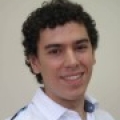
Guilherme Penello Temporão |
Dr. Guilherme Temporão holds a PhD in Electrical Engineering from the Pontifical Catholic University of Rio de Janeiro (2007), having completed a two-year doctoral internship at the Applied Physics Group of the University of Geneva (2004-2006). Currently, he serves as an Associate Professor at PUC-Rio, teaching undergraduate and graduate courses while actively engaging in research within the field of quantum information and communication. His additional areas of interest encompass quantum networks, quantum metrology, quantum computing, optoelectronic instrumentation, and engineering education.

Patrícia Lustoza de Souza |
Patrícia Lustoza holds a BS in physics from the University iof California, San Diego(1981), an MS in physics from the University of Califórnia in San Diego, and a PhD in Physics from PUC- Rio de Janeiro. She is currently a tenured professor of electrical engineering at CETUC/Puc-Rio de Janeirpo. She has extensive exprerience in electrical engineering, with an emphasis on materials and semiconductors, working mainly with the following themes: nanotechnology; opto-electrical devices utilizing amplitude modulators; infrared photo-detectors; soloar cells, etc. She is the coordinator of the semiconductor laboratory (LabSem) at PUC-Rio. of the INCT of semiconductor nano devices(DISSE), and of the fabrication and device characterization laboratory (LabDIS), associated with MCTI which is part of the SisNANO Program of MCTI.

Roberto Avillez |
Roberto R. de Avillez graduated as a metallurgical engineer in 1975 and got the Master in Materials Science in 1977, both in the Militar Institute of Engineering. His Ph.D. was in Metallurgy from the University of Illinois at Urbana-Champaign in 1981. His work has usually been related to the development of new inorganic materials, semiconductors, oxides and steels, with strong enphasis on modelling the thermodynamics and kinetics of phase transformations, crystal structure modelling and characterization by x-ray diffraction. He is responsible for the Laboratory of X-Ray Diffraction in PUC-Rio.
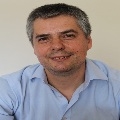
Rodrigo Prioli |
Rodrigo Prioli is an Associate Professor of Physics from PUC-Rio. Is
graduated from Universidade Federal Fluminense with a degree in Physics,
1992, received a Masters Degree in Physics by the Braziliam Center for
Physics Research, 1994 and a PhD in Physics following a sandwich PhD
program by the Braziliam Center for Physics Research and University of
Basel (Switzerland), 1998. His main areas of interest in Physics are
atomic force and scanning tunneling microscopy, applied to nanotechnology,
nanolithography, nanotribology and nanoindentation.

